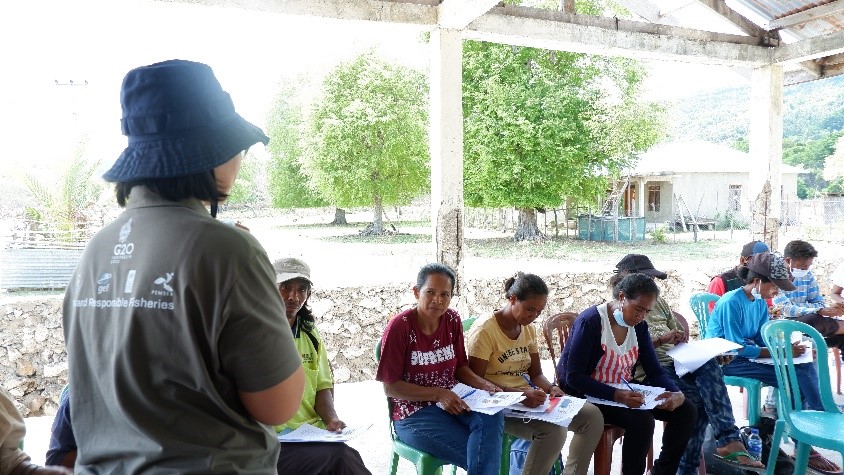Ancient, beautiful and threatened, sea turtles have roamed the planet’s oceans for millions of years. However, in the past few decades, their populations have been dwindling due to a combination of poaching, habitat destruction and bycatch. Evidence of this worrying decline has been seen in Com Village, Timor-Leste.
Com Village is part of Nino Konis Santana National Park –Timor-Leste’s first national park. Its beach is recognised as an important nesting site for hawksbill turtles, while the surrounding ocean provides fertile breeding grounds for other marine wildlife, including dugongs.
Directly across from Com Beach is a sea turtle conservation office. Today, a group of people are chatting there in a half-finished gazebo, which offers some shade from the sun. They are members of Grupu Konservativu – a sea turtle conservation group in Com Village, made up of seven men and 26 women, who voluntarily undertake conservation initiatives to protect sea turtles.
In Com Village, the sea turtle population has been decreasing, largely as a result of human activities – turtles are slaughtered for their meat, or their eggs are stolen from nesting sites. However, people are beginning to wake up to this problem and take action. The conservation group is part of a growing movement in the region, geared towards turtle conservation.
The group has dedicated their time and energy to protecting “lenuk”, meaning sea turtles in the Tetun language. Since 2009, they have been relocating sea turtle eggs to more secure locations, working in collaboration and with guidance from conservation experts, so they can protect the eggs from human exploitation and predators.
Despite some progress over recent years, relocation efforts are yet to yield improvements to sea turtle populations at Com beach. Raul Pereira Mendes, the leader of the conservation group, revealed that hatching and release rates decrease by 80% when the group members tried to hatch the eggs in the same relocation nest. “The unhatched eggs often become smelly and surrounded by ants,” added Lucas Monteiro, the secretary of the conservation group. The decline they have witnessed in hatching rates offers a grim view of sea turtles’ future. But recently, thanks to interventions by ATSEA-2, there has been reason for optimism.
Sea Turtle Conservation Training with ATSEA-2

From 29–30 November 2022, members of the conservation group and various other local villages attended a training session hosted by Dwi Suprapti, a sea turtle expert. She was able to shed light on turtle conservation methods and offer solutions to the problems being faced in their communities. Held over two days at the local conservation office, the training was facilitated by PROSPEK; a local NGO, appointed by the National Coordination Unit of Timor-Leste to support the Com community in their sea turtle conservation work.
From the first day of the training, participants’ enthusiasm was clear to see. All arrived on time, in spite of an arduous 1.5-hour journey via a hilly road. “We have never had sea turtle training like this before, so I think this is a great opportunity to learn how to protect them appropriately,” said Ergilia Dias Quntas, a member of the conservation group.
Suprapti revealed expert insights into the life of these ancient seafaring reptiles, demonstrating the various linkages between them and other organisms and processes within the ecosystem. In return, participants offered their undivided attention throughout the training, while also reaffirming their commitment to the conservation of marine turtles.
One of a conservation group members, Olderico Da Costa said that he learned that sea turtles have a vital role in the environment. He also stated that as a fisherman, he doesn’t see any benefit from exploiting sea turtles. “As a comparison, the price for 1kg fish is $40 and the price for 1kg sea turtle is $20-$30. So, selling sea turtles does not significantly increase family income,” Da Costa added.
Participants also expressed their gratitude to the ATSEA team, Suprapti and PROSPEK for organising such an in-depth training session for the community. “I have been involved in sea turtle conservation for years, but this is the first time I have received such a detailed explanation. I feel very grateful for that,” said Partricio Bilanoa, a member of the conservation group. Another member, Raul Pereira Mendes showed his appreciation too to Suprapti, “Thank you so much to Suprapti. I learned a lot from the two-day training and she has answered most of my questions through her explanation,” said Mendes.
In terms of next steps for future development, the conservation group plans to raise awareness for the protection of sea turtles within and beyond Com Village. Aside from the group’s mission to protect sea turtles, they also hope to develop eco-tourism to provide economic benefits to the local community, along with sustainable funding for sea turtle conservation initiatives. ATSEA-2 Project will continue to support the Com community in their ongoing mission to protect sea turtles in Timor-Leste.
By Ni Luh Putu Yulia Dewi


